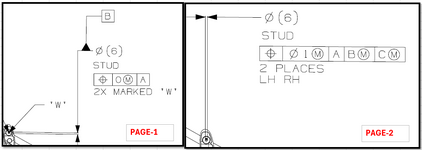MPSU
Automotive
- Aug 26, 2024
- 23
Hey everyone,
I'm working on a new drawing and came across something confusing.
I've attached pictures for reference. Would love to hear your thoughts!

I'm working on a new drawing and came across something confusing.
- Datum A is a plane.
- Datum B is a stud, which has a positional tolerance on one side (without the Ø symbol).
- On the next page of the drawing, the same stud is referenced again, but this time with a positional tolerance relative to A, B, and C datums.
I've attached pictures for reference. Would love to hear your thoughts!

